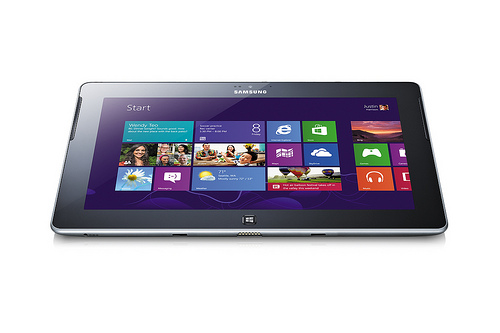The featured image is sourced from Flickr.
Word is the mainstay of business productivity and Microsoft is working hard to keep it optimized for mobile platforms. Given the rapid rise of the BYOD phenomenon in business and Microsoft’s foray into mobile OS market with Windows 8, the tech giant has to maintain Word’s advantage. Therefore, Microsoft has done much more to the new Office for Windows RT than just adding a start bar – the software suite has become a radically optimized experience. So, what’s going on under the hood, and why might it make a difference to your tablet?
In a recent Office blogcast, Microsoft presented a number of exciting new features so discrete you’ll barely realize they’re there. These changes promise to make the Office experience on ARM-powered computing devices even more fluid than we’d previously expected.
First up, there’s Word’s deep idle mode. Since Office 2013 has been designed for long-life productivity and working on-the-go, Word now uses this built-in measure to preserve battery life. After 30 seconds of inactivity, the program will ‘throttle down’. You’ll notice that the cursor stops flashing. In this state, Word needs next to no computing power to continue operating, eking out an extra few minutes from your laptop’s battery. Neat!
For those of you who like to keep a lot of documents or browser tabs open on your computing unit, Word 2013 has a built-in ‘Low Resource Mode’ (referred to as ‘LRM’). When the program is minimized, it surrenders between 10 and 35% of its memory allocation to other programs. This can free up as much as 100 MB from your RAM – crucial, as most ARM-powered devices including laptops and tablets are looking to operate on around 2GB of RAM. An extra 5 percent is, therefore, not to be sneezed at. Once work on the device is resumed, or Word is brought back to the fore, the program loads reloads to the memory super-fast, despite not having reserved any space in your RAM. This means Word will look and feel just as responsive as ever, though it’ll be doing extra work behind the scenes to keep your computing unit fast and efficient.
Again attempting to meet the challenge of limited system resources, Microsoft has changed Word 2013 to use an idle GPU for typing and scrolling, ensuring that characters are recognized quickly and pushed up to the screen instantly. There’s a nice little cursor animation on typing each character, which makes the experience feel just as fluid as if the program were being used on a more powerful machine. It’s a little thing, but it really helps – the program feels custom-built and slick.
We expected Office would have to be rewritten for RT, but news that many aspects of the suite have been significantly optimized will be of huge relief to prospective buyers of ARM Windows 8 machines. Office has often been dogged in the past by glitchy or poor system optimization, and it’s refreshing to see so much attention to detail and polishing at this stage. In general, this bodes well for Windows 8 as a platform – and for the devices like tablets and smartphones that rely upon it for survival.


